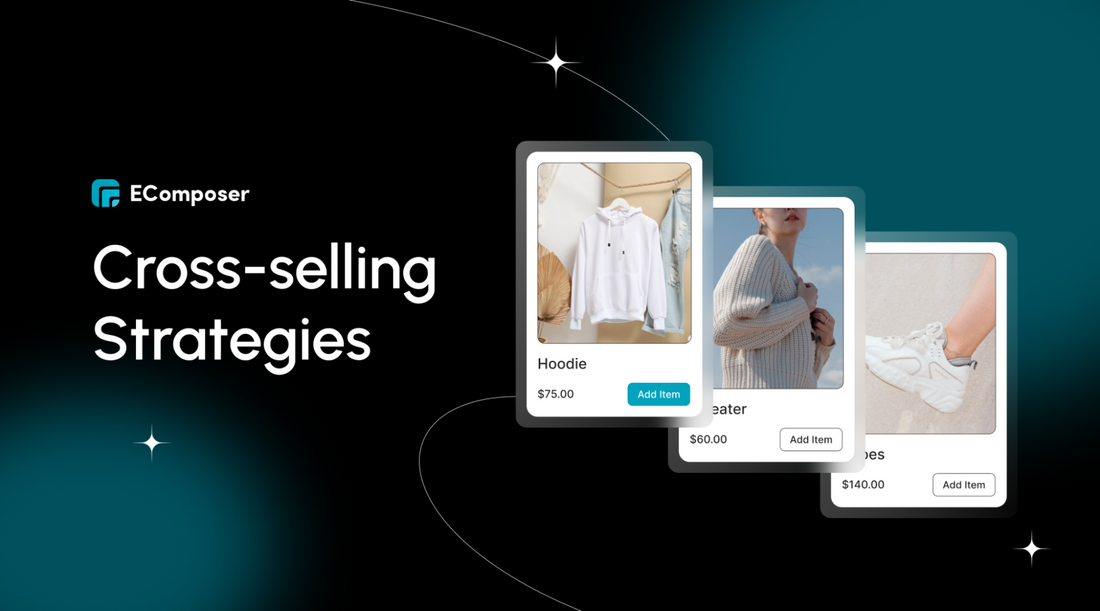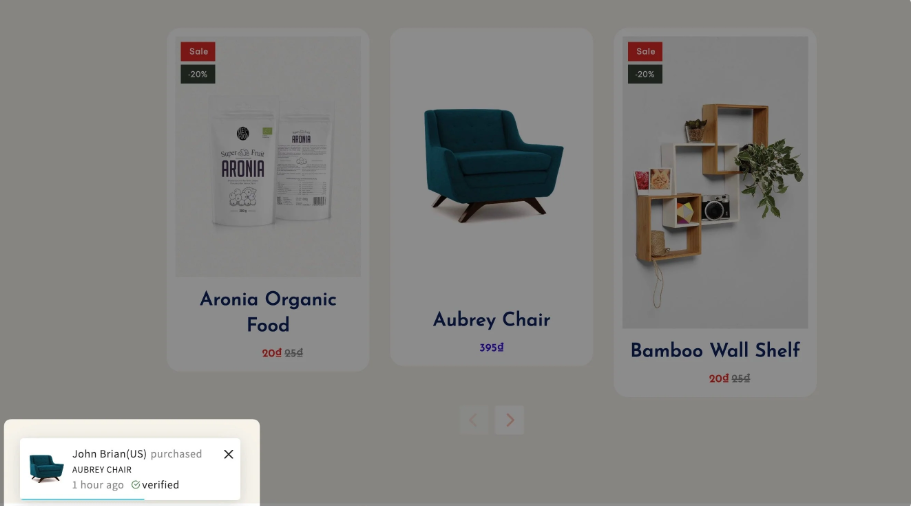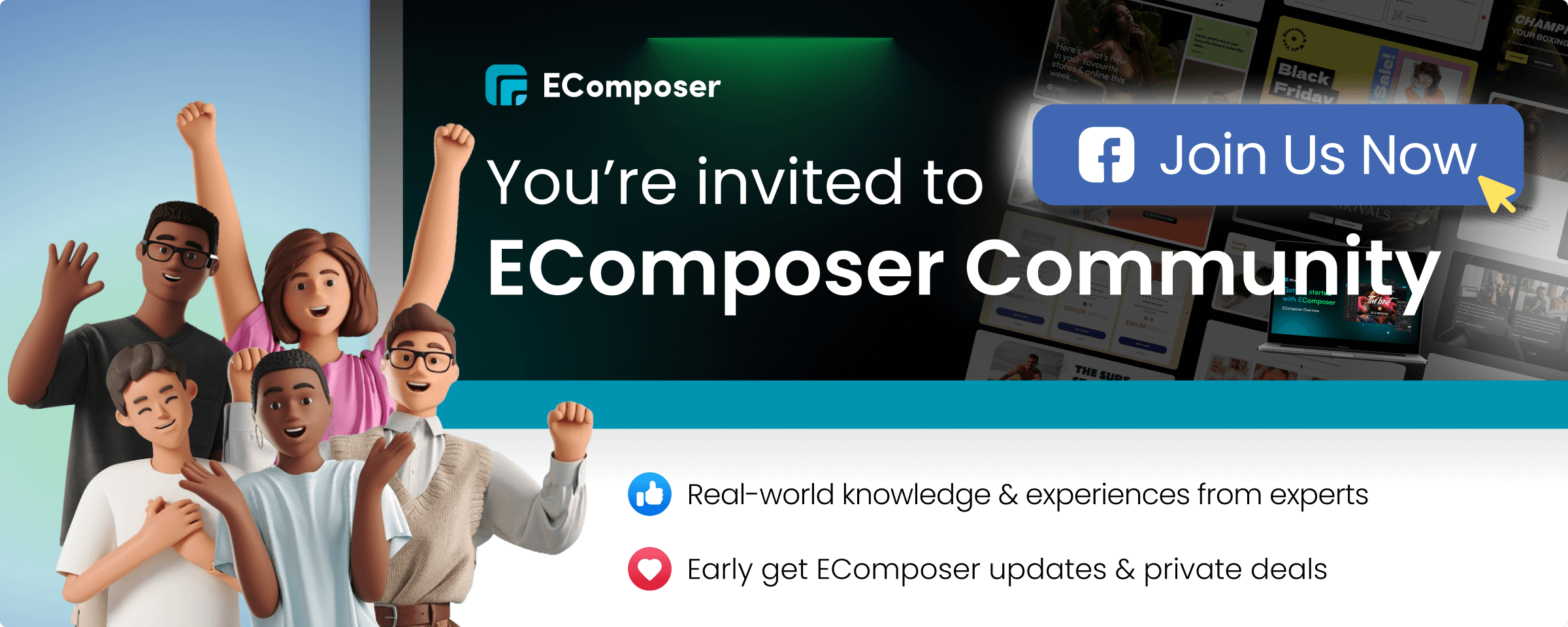10 Proven Cross-selling Strategies For Maximizing Sales

Table Of Contents
What is Cross-selling & its importance in business growth?
Understanding cross-selling
Cross-selling is a strategic sales technique businesses use to encourage customers to purchase additional products or services related to their initial purchase. It involves offering complementary or related items to customers based on their needs, preferences, or previous purchases. Cross-selling aims to increase the value of each transaction by introducing customers to other products or services that complement their original purchase, ultimately driving revenue growth and enhancing customer satisfaction.
Benefits of cross-selling

Cross-selling drives business growth by maximizing revenue opportunities and fostering customer loyalty. Here’s why it's indispensable:
- Revenue Boost: Sell additional products to existing customers, increasing average transaction value and overall revenue.
- Enhance Customer Experience: Recommend relevant items based on customer needs or past purchases, improving satisfaction and loyalty.
- Increase Customer Lifetime Value: Encourage repeat purchases and engagement, extending the customer lifecycle and boosting long-term revenue.
- Competitive Advantage: Stand out by providing tailored recommendations and anticipating customer needs, fostering stronger relationships.
- Cost Efficiency: Cross-selling to existing customers is more cost-effective than acquiring new ones, resulting in lower acquisition costs and higher profitability.
In essence, by prioritizing cross-selling initiatives, businesses can accelerate growth and achieve sustainable success.
Identifying Cross-Selling Opportunities
Spotting cross-selling chances is like finding hidden treasures among your customers. It requires strategic insight into their needs, preferences, and purchasing habits. Here's how to uncover those opportunities:
- Analyze Customer Data: Delve into data to uncover purchasing patterns and demographics. Understand your customers deeply to find cross-selling combinations that resonate with their preferences.
- Segmentation: Divide your customer base into segments based on purchase history or demographics. Tailor cross-selling efforts to specific customer groups for relevance and effectiveness.
- Utilize Customer Feedback: Pay attention to feedback and inquiries to identify potential cross-selling opportunities and address product gaps.
- Product Bundling: Create discounted bundles of complementary items based on frequently purchased combinations to boost sales and perceived value.
- Personalization: Use technology to personalize cross-selling recommendations for each customer, leveraging past purchases and browsing behavior.
- Sales Team Training: Equip your sales team with product knowledge and effective communication skills to upsell additional products during customer interactions.
- Promotional Campaigns: Launch targeted campaigns via email, social media, or advertising to promote cross-selling opportunities and add value to purchases.
By implementing these strategies, you can uncover cross-selling opportunities, increase revenue, and enhance customer satisfaction. Remember to focus on understanding customer needs and providing valuable solutions.
10 Cross-selling techniques & best practices
1. Product Recommendations

(image source: EComposer's Template)
Recommend related or complementary products to customers based on their current purchase. This can be displayed as "Customers who bought this item also bought", “You may also like”, or "Frequently bought together" suggestions.
Best Practices
- Ensure Relevance: Recommend products that are genuinely related or complementary to the customer's purchase. Avoid suggesting items that are unrelated or irrelevant to their needs.
- Use Data Analytics: Analyze customer purchase history and browsing behavior to personalize product recommendations. Tailor suggestions based on individual preferences to increase the likelihood of a purchase.
- Provide Clear Benefits: Clearly communicate the benefits of the recommended products to customers. Highlight how the additional items will enhance their original purchase and add value to their overall shopping experience.
- Monitor Feedback: Monitor customer feedback and adjust product recommendations based on customer preferences and feedback. Consider customer reviews, ratings, and comments to refine your recommendation strategies over time.
- Cross-Sell and Up-Sell: Combine related product recommendations with up-selling and cross-selling techniques to maximize sales opportunities. Encourage customers to consider higher-value or premium options in addition to complementary products.
Explore more: How to create Cross-selling Products for Shopify store
2. Bundle Offers

(image source: milkbar store)
Create bundles featuring complementary products, presenting them at a discounted rate to provide exceptional value to customers. Highlight the savings customers will receive by purchasing the bundle compared to each item individually.
Best Practices
- Ensure Complementary Products: Select products that naturally complement each other and enhance the overall value for the customer.
- Clear Communication: Clearly communicate the benefits and value proposition of the bundled package, highlight the incredible savings awaiting customers when they opt for the bundled offer, showcasing the considerable value compared to buying each item separately.
- Highlight Savings: Prominently showcase the discounted price of the bundled package to draw attention to the cost-saving opportunity for customers.
- Visual Appeal: Use appealing visuals to showcase the bundled products and create a visually enticing offer that grabs the customer's attention.
- Limited-Time Offers: Offer the bundled package as a limited-time promotion to create a sense of urgency. Highlight the time-sensitive nature of the offer to encourage customers to act quickly.
- Personalization: To increase relevance and effectiveness, tailor bundled packages to individual customer segments based on their preferences, purchase history, and browsing behavior.
- Provide Flexibility: Offer flexibility for customers to customize bundled packages based on their specific needs or preferences, allowing them to choose the combination of products that best suits their requirements.
3. Cross-Selling During Checkout

(image source: MeUndies)
Present additional products or services to customers during the checkout process. This can include items frequently purchased with the products in their cart or add-on services that enhance their purchase.
Best Practices
- Relevance: Present additional products or services that are directly related to the items in the customer's cart or enhance their overall purchase experience. Ensure the cross-sell suggestions are relevant to the customer's needs and preferences.
- Non-Intrusive Placement: Integrate cross-selling suggestions seamlessly into the checkout process without disrupting the customer's flow. Avoid intrusive pop-ups or distractions that may deter customers from completing their purchases.
- Highlight Benefits: Communicate the benefits of the additional products or services offered during checkout. Emphasize how these items complement the customer's purchase and add value to their overall shopping experience.
- Limited Options: Limit the number of cross-selling suggestions presented to customers during checkout to avoid overwhelming them with choices. Focus on showcasing a few high-value or popular items that are likely to resonate with the customer.
- Optimized Timing: Present cross-selling suggestions at the right moment during checkout, such as after the customer has added items to their cart before they proceed to payment. This ensures that the suggestions are timely and relevant to the customer's current shopping journey.
- Incentivize: Offer incentives such as discounts or promotions for purchasing additional products or services during checkout. Highlight any special offers or savings to encourage customers to take advantage of the cross-sell opportunities.
- Streamlined Experience: Ensure that the cross-selling process is seamless and user-friendly, allowing customers to add recommended items to their cart with minimal effort. Provide clear calls to action and intuitive navigation to facilitate the checkout process.
- Responsive Design: Optimize cross-selling suggestions for mobile devices to ensure a consistent and user-friendly experience across all devices. Guarantee that the layout and design seamlessly adapt to various devices and resolutions, ensuring an optimal viewing experience for all users.
4. Personalized Recommendations
Use customer data and purchase history to tailor cross-selling recommendations to each customer. Offer personalized suggestions based on their preferences, past purchases, and browsing behavior.
Best Practices
- Data Collection: Gather and examine customer data from multiple sources, including purchase history, browsing behavior, demographics, and preferences. Utilize both explicit data (such as customer preferences and feedback) and implicit data (such as browsing history and past purchases) to build a comprehensive profile of each customer.
- Segmentation: Divide your customer base into groups based on common characteristics or behaviors. This allows you to tailor your personalized recommendations to each segment's specific needs and interests.
- Dynamic Content: Use dynamic content and recommendation algorithms to generate real-time personalized product suggestions. Continuously update and refine your recommendations based on customer behavior and preferences changes.
- Contextualization: Present personalized recommendations in the context of the customer's current shopping journey. For example, they recommend related products based on items they have already viewed or added to their cart or suggest complementary products based on their recent purchases.
- Transparency: Be transparent about how customer data is being used to generate personalized recommendations. Communicate the benefits of customized recommendations to customers, such as helping them discover relevant products or saving time during the shopping process.
5. Limited-Time Offers

(Image source: EComposer's Template)
Offer limited-time cross-selling promotions or discounts to create a sense of urgency. Highlight that the offer is only available for a limited time to encourage customers to decide quickly.
Best Practices
- Clear Communication: Customers should be aware that the offer is limited in time. Use attention-grabbing messaging and visuals to highlight the urgency and scarcity of the promotion.
- Set a Deadline: To create a sense of urgency, specify a precise end date and time for the limited-time offer. Countdown timers can visually reinforce the deadline and encourage customers to act quickly.
- Exclusive Deals: Offer exclusive discounts or promotions that are only available for a limited time. This makes the offer feel special and encourages customers to take advantage of it before it expires.
- Promote Across Channels: Promote the limited-time offer across multiple marketing channels, including your website, email campaigns, social media, and advertising platforms. Consistent messaging across channels reinforces the urgency of the offer and maximizes its reach.
- Create Scarcity: Emphasize the limited availability of the products or services included in the offer to create a sense of scarcity. Highlight that supplies are limited or that the offer is only available to a limited number of customers.
- Highlight Savings: Communicate the savings or benefits customers will receive by taking advantage of the limited-time offer. Harness the irresistible opportunity at hand! Act swiftly to seize this remarkable deal and unlock the unparalleled value that awaits you.
6. Loyalty Programs

Reward loyal customers with exclusive cross-selling offers or discounts. Offer incentives for customers to purchase additional products or refer friends and family to your business.
Best Practices
- Clear and Transparent Rewards: Communicate the benefits and rewards of your loyalty program to customers. Make sure they understand how to earn rewards, what those rewards entail, and how to redeem them.
- Tiered Reward Structure: Implement a tiered reward structure that offers increasingly valuable benefits as customers progress through different levels of loyalty. This encourages repeat purchases and incentivizes customers to reach higher tiers.
- Personalization: Tailor loyalty rewards and offers to customers based on their purchase history, preferences, and behavior. Personalized rewards make customers feel valued and appreciated, increasing their loyalty to your brand.
- Exclusive Cross-Selling Offers: Offer exclusive cross-selling offers or discounts to loyalty program members. Provide incentives for customers to purchase additional products or refer friends and family to your business, such as bonus points, exclusive deals, or free gifts.
- Multi-Channel Engagement: Engage loyalty program members across multiple channels, including your website, email, social media, and mobile app. To encourage ongoing participation, keep them informed about new offers, promotions, and rewards.
- Simplify Redemption: Make it easy for customers to redeem their loyalty rewards. Provide clear instructions and options for redeeming rewards, such as online redemption, in-store redemption, or automatic discounts at checkout.
- Encourage Referrals: Incentivize customers to refer friends and family to your business by offering rewards or bonuses for successful referrals. This will help you acquire new customers and strengthen existing customer relationships and loyalty.
7. Popup

Implement pop-up notifications on your website to suggest related or complementary products when customers are browsing or about to leave the site. Use eye-catching visuals and compelling messaging to capture their attention and encourage additional purchases.
Best Practices
- Timing is Key: Display pop-ups at strategic moments during the customer's browsing journey, such as when they are about to leave the site, after spending a certain amount of time on a page, or when they exhibit exit intent. This ensures the pop-up is relevant and doesn't disrupt their browsing experience.
- Relevance: Ensure that the pop-up's content is highly relevant to the customer's interests and current browsing behavior. Use data analytics to personalize pop-up suggestions based on past purchases, browsing history, or items in their cart.
- Compelling Visuals: Use eye-catching visuals and graphics to grab the customer's attention and make the pop-up visually appealing. Incorporate high-quality images of the recommended products and use engaging colors and fonts to draw attention to the message.
- Clear Call-to-Action: Communicate the action you want the customer to take in response to the pop-up, whether exploring the recommended products, adding them to their cart, or completing their purchase. Use persuasive language and a prominent call-to-action button to encourage conversions.
- Limited-Time Offers: Create a sense of urgency by offering limited-time promotions or discounts in the pop-up. Highlight that the offer is only available for a limited time to encourage customers to act quickly and take advantage of the opportunity.
- Customization Options: Provide customers with options to customize their pop-up experience, such as allowing them to dismiss the pop-up or adjust their preferences for future pop-up notifications. Respect their choices and make it easy for them to control their browsing experience.
- Mobile Optimization: Ensure that pop-ups are optimized for mobile devices to provide a seamless experience across all devices. Use responsive design and test the pop-up on different screen sizes to ensure it displays correctly and is easy to interact with on smartphones and tablets.
8. Post-Purchase Email
Send follow-up emails after customers have purchased to thank them for their order and suggest complementary products they may be interested in. To increase relevance and engagement, include personalized recommendations based on their recent purchase history.
Best Practices
- Timely Delivery: Send post-purchase emails promptly after the customer has completed their transaction. This ensures that the email is relevant and timely, enhancing the customer's overall experience with your brand.
- Express Gratitude: Start the email by expressing gratitude and thanking the customer for their recent purchase. Show appreciation for their support and loyalty to your brand, making them feel valued and appreciated.
- Personalization: Personalize the content of the email based on the customer's recent purchase history and preferences. Include personalized recommendations for complementary products or related items that align with their interests and needs.
- Relevant Recommendations: Recommend relevant and complementary products to the customer's recent purchase. Use data analytics to identify cross-selling opportunities and suggest items that enhance the value of their original purchase.
- Clear Call-to-Action: Include a clear call-to-action (CTA) in the email, prompting the customer to explore the recommended products or make additional purchases. Use persuasive language and a prominent CTA button to encourage engagement and conversions.
- Provide Value: Offer additional value to the customer beyond just product recommendations. Include helpful tips, resources, or content related to their recent purchase to enhance their experience further and provide value-added benefits.
- Incentivize Repeat Purchases: Consider offering incentives or discounts in the post-purchase email to encourage customers to make repeat purchases. Highlight any special offers or promotions available exclusively to recent customers to incentivize them to return to your store.
9. Thank You Page

Display cross-selling recommendations on the thank you page after customers have completed their purchase. This is a prime opportunity to suggest additional items or services that complement their recent purchase while they are still in a buying mindset.
Best Practices
- Immediate Gratification: Display cross-selling recommendations on the thank you page immediately after customers have completed their purchase. This ensures they are still in a buying mindset and are more likely to consider additional purchases.
- Relevance: Recommend products or services that are directly related to the customer's recent purchase. Use data analytics to identify cross-selling opportunities and suggest items that complement their original purchase, increasing the likelihood of conversion.
- Visual Appeal: On the thank you page, showcase the recommended products using visually appealing graphics and images. High-quality visuals grab the customer's attention and make the recommendations more enticing.
- Clear Call-to-Action: Include a clear call-to-action (CTA) prompting customers to explore the recommended products further or add them to their cart. Use persuasive language and a prominent CTA button to encourage engagement and conversions.
- Limited Options: To avoid overwhelming customers with choices, limit the number of cross-selling recommendations displayed on the thank you page. Focus on showcasing a few high-value or relevant items that are likely to resonate with the customer.
- Value Proposition: Clearly communicate the benefits and value proposition of the recommended products to customers. Highlight how these items complement their recent purchase and add value to their overall shopping experience.
Read more: How to Edit / Customize Shopify Thank You Page + 5 Templates
10. Cart Drawer

Utilize a cart drawer feature on your website to showcase related or complementary products as customers add items to their cart. This allows you to capture their attention at a critical moment in the purchase journey and increases the likelihood of upselling or cross-selling additional items.
Best Practices
- Immediate Visibility: Ensure that the cart drawer is prominently displayed and immediately visible to customers as they add items to their cart. This will let you capture their attention at a critical moment in the purchase journey and increase the likelihood of cross-selling additional items.
- Relevance: Showcase related or complementary products in the cart drawer that are directly relevant to the items in the customer's cart. Use data analytics to identify cross-selling opportunities and suggest items that enhance the value of their purchase.
- Visual Appeal: Use visually appealing graphics and images to showcase the recommended products in the cart drawer. High-quality visuals grab the customer's attention and make the recommendations more enticing.
- Dynamic Updates: Update the content of the cart drawer in real-time as customers add or remove items from their cart. This ensures that the cross-selling recommendations remain relevant and up-to-date throughout the customer's shopping journey.
Overcoming Challenges in Cross-Selling

Cross-selling can be a powerful strategy for increasing revenue and enhancing customer satisfaction, but it also comes with its own challenges. Here are some common challenges in cross-selling and strategies to overcome them:
Relevancy
One of the main challenges in cross-selling is ensuring that the recommended products are relevant to the customer's needs and preferences. To overcome this challenge, businesses can use data analytics and customer segmentation to personalize cross-selling recommendations based on individual purchase history, browsing behavior, and demographics.
Customer Resistance
Some customers may only accept cross-selling efforts if they perceive them as pushy or irrelevant. To overcome this challenge, businesses should focus on providing value and addressing the customer's needs rather than simply trying to increase sales. Achieving this entails providing tailored suggestions, emphasizing the suggested items' advantages, and respecting the customer's preferences and privacy.
Integration
Another challenge in cross-selling is integrating cross-selling strategies seamlessly into the customer experience. This includes ensuring that cross-selling recommendations are displayed at the right time and in the proper context, such as during checkout or on the thank you page after a purchase. Businesses can tackle this obstacle by allocating resources towards technology and instruments that enable cross-selling, such as recommendation engines and customer relationship management (CRM) platforms.
Training and Education
Cross-selling effectively requires training and education for sales and customer service teams. Employees need to understand the value proposition of the recommended products, identify cross-selling opportunities, and communicate cross-selling offers to customers persuasively and non-intrusively. Businesses can overcome this challenge by providing ongoing employee training and support and implementing incentives and recognition programs to encourage cross-selling efforts.
Measuring Success
Finally, measuring the success of cross-selling efforts can be challenging, primarily if businesses rely solely on traditional metrics such as revenue or conversion rates. To overcome this challenge, companies should track and analyze key performance indicators (KPIs) specific to cross-selling, such as cross-sell conversion rate, average order value, and customer lifetime value. This empowers businesses to assess the efficacy of their cross-selling tactics and make informed decisions based on data to enhance performance continually.
By addressing these challenges proactively and implementing strategies to overcome them, businesses can unlock the full potential of cross-selling and drive meaningful results for their bottom line.
Successful Cross-selling case studies to learn from
1. Notebook Therapy

Notebook Therapy, an online retailer specializing in stationery and journaling supplies, has successfully implemented cross-selling strategies to improve the customer journey and boost sales. By leveraging limited-time offers and related product recommendations on product pages, Notebook Therapy has effectively encouraged customers to make additional purchases and increase their average order value.
Key Takeaways
- Create Urgency: Implement limited-time offers to instill a sense of immediacy and encourage customers to act promptly.
- Personalize Recommendations: Tailor cross-selling recommendations to the customer's interests and preferences to increase relevance and engagement.
- Optimize CTAs: Use clear and compelling calls to action to guide customers toward making additional purchases and maximize conversions.
2. Zara

Zara, a global fashion retailer renowned for its fast-fashion approach, has innovatively implemented cross-selling strategies to enhance the shopping experience and increase sales. One successful tactic involves selling sets of five items to create a complete outfit, accompanied by a "You May Also Like" section on their website.
Key Takeaways
- Curate Complete Outfit Sets: Offer customers curated sets of items that work together to create a cohesive outfit, simplifying the shopping process and encouraging multiple purchases.
- Personalize Recommendations: Use data-driven insights to personalize cross-selling recommendations and suggest items that align with the customer's style and preferences.
- Streamline the Shopping Experience: Offer coordinated outfit options and related product recommendations to provide customers with a seamless and intuitive shopping experience.
3. Meowingtons

Meowingtons, an online retailer specializing in cat-themed products and accessories, has implemented strategic cross-selling tactics to enhance the shopping experience and drive sales. By showcasing a "You may also like..." section on product details pages, incorporating a "Recently Viewed" section, and suggesting complementary products in the mini cart drawer, Meowingtons effectively encourages customers to explore related products and make additional purchases.
Key Takeaways
- Personalized Recommendations: To increase relevancy and engagement, provide customized product suggestions tailored to individual customer preferences, purchase history, and online activity.
- Convenient Access: Provide easy access to related products through features such as "You may also like..." sections, "Recently Viewed" sections, and mini cart drawers to encourage cross-selling and facilitate additional purchases.
- Dynamic Updates: Dynamically update cross-selling recommendations in real-time based on customer interactions, such as adding items to the cart, to provide timely and relevant suggestions that enhance the shopping experience.
Boost sales with cross-selling strategies now.
In conclusion, mastering the art of cross-selling is not just about boosting sales numbers; it's about building stronger relationships with customers and delivering exceptional value at every touchpoint. By implementing the proven cross-selling strategies outlined in this blog, businesses can maximize sales, enhance customer satisfaction, and foster long-term loyalty.
FAQs - Cross-selling Strategies

1. What is the difference between cross-selling and upselling?
Answer: Cross-selling involves recommending related or complementary products to customers based on their purchase. In contrast, upselling encourages customers to upgrade to a higher-end or premium version of the product they're considering. Cross-selling focuses on expanding the customer's purchase by offering additional items, whereas upselling aims to increase the value of the customer's purchase by suggesting a higher-priced alternative.
2. What is the most popular and effective cross-selling technique?
Answer: One of the most popular and effective cross-selling techniques is product recommendations. This encompasses suggesting related or complementary products to customers based on their previous purchases. Displaying "Customers who bought this item also bought" or "Frequently bought together" suggestions can significantly increase the likelihood of additional purchases and maximize sales.
3. Are there any specific tools available for implementing cross-selling strategies on Shopify?
Answer: Yes, there are several Shopify apps and tools available specifically designed for implementing cross-selling strategies. Some popular options include EComposer, which offers many upsell-cross-selling features, such as frequently bought together, or the integration extensions with top cross-selling Shopify Apps (Bold Upsell, ReConvert Upsell & Cross-Sell). This app offers features such as customizable recommendation widgets, automated product suggestions, and targeted upselling campaigns to help Shopify merchants maximize sales and increase average order value.
8. Can cross-selling be automated, or does it require manual intervention?
Answer: Cross-selling can be automated to a certain extent using technology and tools such as recommendation engines and customer segmentation algorithms. These tools support you in analyzing customer data and behavior to generate personalized recommendations and automate the delivery of cross-selling offers. However, some level of manual intervention may still be required to optimize cross-selling strategies, monitor performance, and adjust recommendations based on customer feedback.
9. Is cross-selling suitable for all types of businesses and industries?
Answer: Cross-selling can benefit a wide range of businesses and industries, regardless of size or sector. Cross-selling can increase revenue, enhance customer satisfaction, and drive repeat business, whether selling physical products, digital goods, or services. However, the effectiveness of cross-selling may vary depending on factors such as the characteristics of the products or services being provided, the intended audience, and the competitive environment.
10. How can businesses ensure that cross-selling efforts align with their marketing and sales strategies?
Answer: Align cross-selling efforts with business objectives: Ensure that cross-selling initiatives are aligned with broader business goals and objectives, such as boosting revenue, improving customer retention, or expanding market share.
Integrate with other marketing channels: Coordinate cross-selling efforts via different marketing channels, such as email, social media, and advertising, to create a cohesive






![[16+] Key Factors To Creating High-Converting Landing Pages](http://ecomposer.io/cdn/shop/articles/image36_d556409c-ae96-447f-ae87-cad185353947_533x.png?v=1743058709)












0 comments